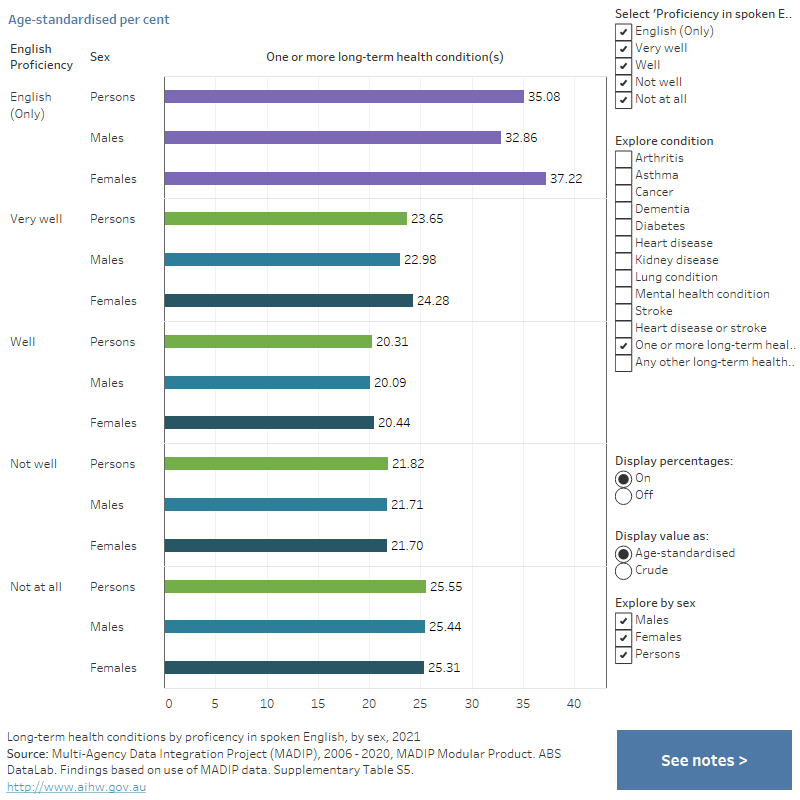Proficiency in spoken English
Figure 5: Long-term health conditions by proficiency in spoken English, by sex, 2021
This graph shows the crude and age-standardised percentages of people reporting a long-term health condition in the 2021 Census, by proficiency in spoken English and sex. For most conditions, the prevalence was higher in those who did not speak English well or at all compared to those who spoke it well or very well. However, for asthma, the prevalence was lower in those who did not speak English well or very well compared with those who spoke it well or very well. Overall, there were variations between each condition and proficiency in spoken English.

For people who spoke a language other than English, the prevalence of one or more long-term health condition(s) had a U-shaped relationship with level of proficiency in spoken English:
- very well (24%)
- well (20%)
- not well (22%)
- did not speak English at all (26%).
For most conditions, the prevalence was higher in those who did not speak English well or at all compared to those who spoke it well or very well, including dementia, kidney disease, lung conditions, mental health, stroke and heart disease.
However, for asthma, the prevalence was lower in those who did not speak English well or very well compared with those who spoke it well or very well.


